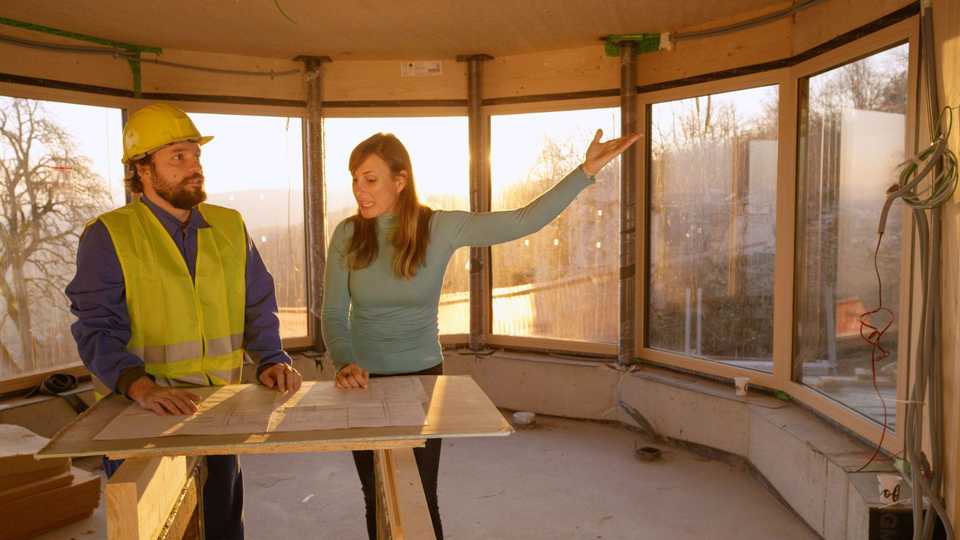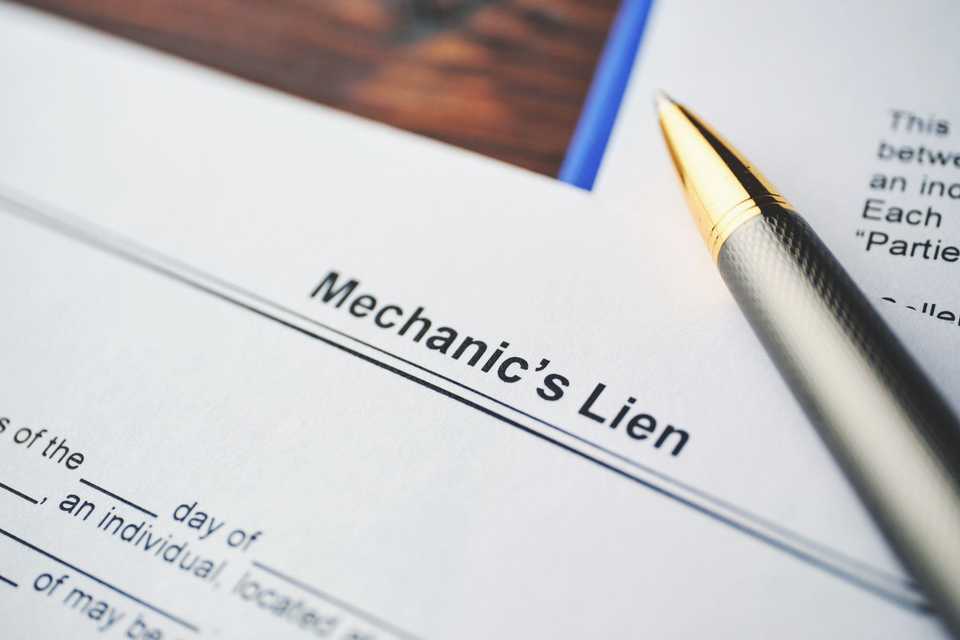Construction liens, governed by the _Construction Lien Ac_t and the Construction Act in Ontario, serve as a powerful tool to ensure those who provide labour, materials, or services to a construction project are fairly compensated.

Whether you're a seasoned professional in the construction industry or a property owner embarking on a construction project, understanding the nuances of construction liens in Ontario is indispensable for protecting your financial interests.
Keep reading to learn more from JuriGo about the fundamental aspects of how construction liens work!
What are construction liens?
| At its core, a construction lien is a legal claim made against a property by someone who has supplied services or materials to improve that property. By allowing a lien to be registered against the property in question, it ensures that a financial dispute does not leave workers or suppliers unpaid. |
|---|
Under Section 14 of the Construction Lien Act, any person who supplies services or materials for an improvement directly to an owner, contractor, or subcontractor acquires a lien against the owner’s interest in the property.
This provision is inclusive, covering a wide range of contributions to the improvement from physical construction materials to professional services provided by architects and engineers. It's important to note, however, that the Act explicitly excludes claims for interest on the amounts owed, focusing solely on the principal value of the services or materials provided.
When is a lien created and what are its limitations?
A lien arises right when services or materials are first supplied to an improvement.
This immediacy underscores the importance of promptly addressing payment issues in construction projects to avoid encumbrances on property titles.
The Act delineates certain limitations and exceptions regarding the attachment of liens. For instance, liens do not attach to properties owned by the Crown, reflecting the unique status of government property.

Additionally, the Act specifies conditions under which liens can attach to interests in property that are not owned outright but are instead held under a lease. This means that if a contractor provides work or services that improve a leased property and is not paid, they can attach a lien to the tenant’s interest in the property (called the leasehold interest), assuming they follow the proper steps outlined in the Act.
The Act also outlines specific considerations for joint or common property interests, leasehold interests, and scenarios involving improvements on multiple premises. These provisions ensure that liens can effectively secure payment across a wide range of property arrangements and project types.
What is the value of a lien? And does it expire?
The value of a lien is capped at the amount owed to the lien claimant for their contribution to the improvement. It's subject to the concept of holdbacks, which are funds that a payer must withhold until the lien period expires.
This system ensures that there is money available to satisfy lien claims without exceeding the least amount owed by the payer to the contractor or any subcontractor involved.
Additionally, construction liens have a limited lifespan. They must, within a specific time frame after the services or materials are last supplied, be:
- Preserved through registration in the land registry office, or
- Delivered as a copy to the owner if the lien doesn't attach to the property.
If a lien is not preserved within this period, it expires and can no longer be enforced. Additionally, when a lien expires, the lien holder has the option to make a motion under Section 46 of the Act, which can lead to a court declaration that the lien has expired, ensuring the property title can be cleared of claims that are no longer active.
How to file a lien in Ontario
Filing a construction lien in Ontario involves several key steps, each governed by strict timelines and requirements:
- Identification of lien eligibility: Not every contribution to a construction project may qualify for a lien. It's essential first to determine whether the work or materials provided are lien-able under the Construction Act.
- Timely action: A lien must be registered within 60 days of the project’s substantial completion, abandonment, or when a certificate of completion is issued. This timeline is crucial, as missing it can result in losing the right to file a lien.

- Preparation of the lien: This step involves accurately detailing the work done or materials supplied, the associated costs, and the property description. Legal advice is often sought in this stage to ensure accuracy.
- Registration of the lien: The prepared lien is then registered against the title of the property in question, making the claim a matter of public record.
- Notification: The property owner and, in some cases, the general contractor must be notified of the lien’s registration.
This process places a temporary hold on the property, affecting the owner’s ability to sell or refinance until the dispute is resolved or the lien is discharged.
What are your rights and responsibilities?
The Construction Act provides a balanced framework of rights and responsibilities:
- Contractors and suppliers: They have the right to file a lien if unpaid for work or materials supplied. The Act also outlines procedures for enforcing liens, including timelines and the potential for initiating legal action to resolve payment disputes.
- Property owners: Owners have responsibilities to ensure contractors and suppliers are paid but also have rights under the Act, including receiving proper notice of any liens and disputing claims they believe are unjust.
The Act also introduces mechanisms for dispute resolution, aiming to resolve conflicts efficiently and fairly, minimizing the impact on ongoing construction projects.
The process of preserving and perfecting a lien
Despite the stringent timelines for the expiry of construction liens, Ontario’s Construction Lien Act provides avenues to protect the rights of those involved in the construction industry.

To enforce a lien, it must first be preserved by registration or notification, as applicable, and then perfected. Perfection of a lien involves initiating legal action to enforce the claim and, where the lien attaches to property, registering a certificate of action.
Perfected liens play an important role in securing payment for services and materials provided in the construction sector. However, these liens are not indefinite. They expire two years after the action that perfected them, unless a court has either ordered a trial or set the action for trial, encouraging the prompt resolution of disputes.
However, the expiration of a lien doesn’t affect any other legal rights or remedies available to the person whose lien has expired. This means that even if a lien expires, the claimant may still pursue other legal avenues to recover the owed amounts, preserving the fundamental right to payment.
The right to information under the Construction Lien Act
One of the unique features of the Construction Lien Act is the right to information, which allows anyone with a lien, or who is a beneficiary of a trust under the Act, to request and obtain critical information related to the construction project.
This includes details about the contract, the state of accounts, and any bonds related to the project. Providing transparency, this right facilitates informed decision-making and can aid in the resolution of disputes.
| Request from | Information includes |
|---|---|
| Owner or contractor | Parties to the contractContract price State of accountsLabour and material payment bond details |
| Contractor/Subcontractor | Subcontract details State of accounts between parties Certification and completion status |
| Owner (selling the home) | Purchaser detailsSale price Occupancy permits or certificates of completion |
This right to information empowers lien holders and other stakeholders to make well-informed decisions and manage their risks more effectively.
Discharge and vacation of liens
The Construction Lien Act outlines the procedures for discharging or vacating preserved or perfected liens, either through mutual agreement, by paying the claimed amount into court, or by court order. This flexibility helps ensure that liens do not unduly burden property titles once disputes are resolved. Other resolution options include:
- Discharge by Release:
- Liens can be discharged by registering a release on the property title or by delivering a release to the property owner, thus clearing the property of the lien.

- Withdrawal of Notice:
- Withdrawal of a lien notice reverts the situation to as if the notice had never been issued, simplifying the resolution process when disputes are settled.
For complex cases, the Act provides for the appointment of a trustee, who can be appointed by the court to manage or sell the property, complete the project, or take other necessary actions to preserve the property’s value and satisfy lien claims.
Labour and material payment bonds also offer an additional layer of financial security for those involved in construction projects. These bonds guarantee payment to contractors and suppliers, providing a direct claim against the bond issuer in case of default by the principal.
Practical implications for homeowners and contractors
Construction liens are important, as they serve as a protective mechanism within the construction industry - balancing the rights and interests of property owners, contractors, and suppliers.
Understanding how these liens work, the process for filing them, and the rights and responsibilities under the law can help avoid disputes and ensure projects proceed smoothly.
Best practices include clear contracts, timely communication, and understanding the legal framework surrounding construction projects. When in doubt, seeking legal advice will provide clarity, ensuring that all parties navigate the complexities of construction liens with ease.
Hire a lawyer today! JuriGo’s matching service is free of charge and without obligation. Simply fill out the form below and we’ll find the right lawyer for your needs in your area!